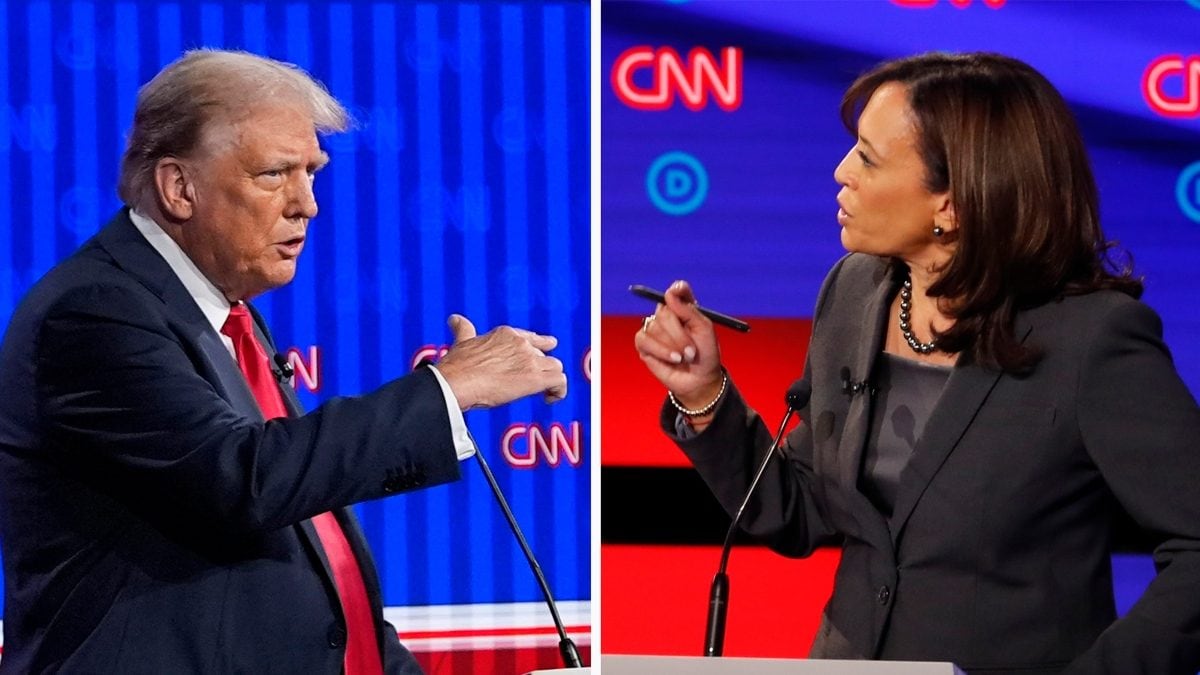The highly anticipated debate between US Vice President Kamala Harris and former President Donald Trump will take place on Tuesday, September 22nd, at the National Constitution Center in Philadelphia. This event marks the first time the two political heavyweights will face off in a head-to-head confrontation, and the stakes are high as both seek to gain a crucial edge in what is becoming a tight race for the White House. After weeks of negotiations and back-and-forth between the campaigns, the US broadcaster ABC, which is hosting the debate, has finally announced the official rules of engagement, providing a clear understanding of how this critical showdown will unfold.
Debate Details: Time, Location, and Moderators
The debate is scheduled for Tuesday, September 22nd, at 9:00 PM local time (0100 GMT Wednesday) at the National Constitution Center in Philadelphia. The event will be aired live and due to the ongoing COVID-19 pandemic, there will be no audience present in the room. The debate will be moderated by two seasoned ABC anchors, David Muir and Linsey Davis, ensuring a neutral and experienced guidance of the conversation.
Format and Structure: A Timed and Structured Engagement
The debate will follow a structured format, with a total duration of 90 minutes, divided into six segments. There will be two commercial breaks during the debate, allowing for a short pause for both candidates and the viewers. The debate will commence without opening statements, and will instead focus directly on answering a series of questions posed by the moderators.
Microphone Protocol: A Unique Approach to Managing Interruptions
One of the key issues debated prior to the announcement of the final rules was the use of microphones. This was a topic of particular contention, with both campaigns raising concerns and accusations of cowardice. Ultimately, ABC has implemented a unique solution to address these concerns. Each candidate’s microphone will be live only when it is their turn to speak and will be muted when it’s the other candidate’s turn. This approach seeks to avoid the kind of disruptive interruptions that characterized the previous debates, ensuring that each candidate has a clear opportunity to present their points without unnecessary interruptions.
Questioning and Rebuttals: A Structure for Focused Dialogue
The moderators will be solely responsible for asking questions, and the topics or questions will not be shared with the candidates in advance. This element of surprise ensures a genuine and spontaneous exchange of ideas and policies.
The format provides two minutes for each candidate to answer a question, followed by a two-minute rebuttal from their opponent. In addition, candidates will be granted one minute for any follow-up, clarification, or response to their opponent’s statements. This format encourages both a comprehensive response and a structured counterpoint, promoting a deeper level of engagement with the issues at hand.
The Closing Arguments: Final Appeals to the Voters
To conclude the debate, each candidate will have two minutes to deliver a closing statement. In keeping with the tradition established in previous debates, Trump, as the challenger in this race, will be granted the final closing statement, determined by the outcome of a virtual coin toss.
Debate Etiquette: Setting the Stage for Respectful Engagement
Both Harris and Trump will stand behind podiums for the entire duration of the debate, with no props or pre-written notes allowed. The only items permitted on the podium are a pen, a pad of paper, and a bottle of water, creating a level playing field for both candidates. To further ensure a focus on the debate itself, campaign staff will not be permitted to speak with or interact with the candidates during the commercial breaks.
Takeaway Points: A Crucial Moment in the Campaign
The upcoming debate between Kamala Harris and Donald Trump promises to be a defining moment in the 2020 US Presidential election campaign. It is a crucial opportunity for both candidates to make a lasting impression on voters and to solidify their stances on key issues facing the nation. With the stage set, the final rules in place, and a format designed for a focused dialogue, the spotlight now turns to the candidates themselves, who will use this platform to present their vision for the future of the United States.




